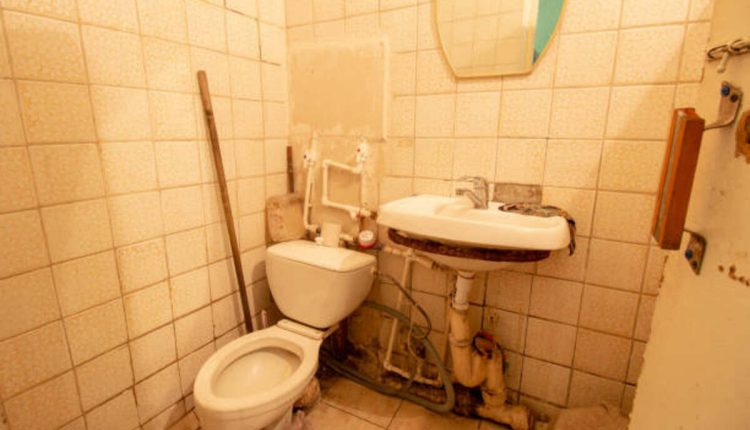Toilet rough plumbing is an integral component of bathroom renovation. This process includes installing drain lines, vent stacks, and water supply pipes.
Toilet rough-in measurements refers to the distance from an unfinished wall to the center of its drainpipe opening (toilet flange). Incorrect toilet rough-in measurements can cause significant structural damage in homes.
Adjusting the Toilet Rough-in Measurement
Toilet rough measurements are often overlooked when considering toilet installation and preventing structural damage to bathrooms. By understanding this measurement and the factors that impact it, homeowners can make informed decisions about purchasing one that best fits their current bathroom setup without risking costly plumbing repairs.
A toilet’s rough-in measurement refers to the distance from its wall to the center of its drainpipe where waste is flushed away. Although the standard measurement for rough-in is 12 inches, this can differ depending on your plumbing setup and other considerations.
To select an appropriate rough-in size, locate the drainage hole on the floor and identify where flange bolts connect to the wall; these bolts should be visible through a circular hole with a wax ring around it. Alternatively, look for caps on the back of your toilet to determine where its drainage pipe passes through walls – wall-mounted models often have round holes behind their seats where this occurs; with rear outlet models, this hole typically is visible through an oval opening on the floor behind.
Once you have determined the location of the drainage hole, measure from a bare wall to the exact center of the drainpipe opening. Make sure not to consider baseboards or any trim attached to the wall when taking this measurement, and double-check your work before continuing with the installation process. Incorrect measurements could cause misalignment that puts undue stress on the toilet and cause leaks or clogs if measurements are inaccurately taken; furthermore, incorrect measurements could cause misalignments that put unnecessary strain on it, which in turn causes leaks or clogs.
Offset Flanges
Toilet flanges are pipe fittings used to connect drainpipes to floors and anchor toilets firmly to them. Common types include those constructed from PVC or cast iron that comes in various sizes; round, square, and offset options are all possible, as are offsetting closet flanges that allow standard toilet installations with nonstandard rough-in dimensions.
An adequately designed offset flange has an aperture that is roughly circular and seals perfectly with conventional wax rings, while poorly designed offset flanges may feature apertures shaped more like bowls that do not close properly or restrict waste flow, causing possible clogging issues.
An offset flange allows you to install a standard toilet on non-standard measurements and also helps solve other plumbing issues associated with your toilet’s rough plumbing. For instance, if your home contains a 12-inch toilet but a ten or 14-inch drainpipe, an offset flange could allow you to switch out for a 10-inch model and eliminate excess water accumulation in red arrow areas.
Offset flanges from Toto, FullFlush, and DropKick can be found across a range of models on the market, each equipped with a 3″ Sch 40 hub connection to fit over 3-inch PVC or 4-inch pipe. Furthermore, each features an integrally molded test cap designed to prevent debris from entering during rough-in and enable system testing of your DWV system.
Rough-In Extenders
Relocating the drainpipe for toilet rough plumbing adjustments may be possible when undertaking major bathroom renovations; however, this can be both time-consuming and costly work.
When installing a new toilet, one of the easiest ways to adjust its rough-in measurement is with a flange extender. This small piece bolts securely to an existing flange, creating more surface area for closet bolts to grab onto. In addition, using one can prevent tank movement that could result in leakage or other problems.
However, this could leave a gap between the tank and the wall, which won’t save much space in a small bathroom. TOTO offers models equipped with their unique Unifit rough-in that adjusts for different sizes of toilets – an adjustable solution designed to save space!
Understanding standard toilet rough-in measurements provides an excellent place to start when selecting the ideal model; however, every bathroom is unique. By taking time and care to measure accurately your existing plumbing setup and ensure a toilet that fits seamlessly and aligns with its drainage system. Failing to do this accurately could lead to misalignment or poorly functioning toilets that leak or clog.
Relocating the Drainpipe
Relocating the drainpipe in your bathroom may serve several purposes, from making room for an elongated toilet bowl to simply saving space. But this can be an intricate and time-consuming task best left to professionals.
Locate the old drain pipe by inspecting the flange of an existing toilet and looking for its flange to identify where its drainage pipe runs. Look for a knob sticking out from the wall about 2-10 inches (5.1-25.4 cm). Mark out this location on the wall where your new toilet will go so that when cutting its hole, you are cutting precisely where intended.
Use a saw to cut away the old toilet bend marked on the wall with a pencil. Attach new plumbing with fittings that match what was removed and connect wyes or sanitary tees; these must be routed gradually into your waste-vent stack to minimize negative impacts on plumbing flow.
Once the new piping is in place, test for leaks by applying soap solution to all joints and connections. If any leaks exist, be sure to repair them prior to continuing work on other tasks. In addition, be aware of local plumbing codes and regulations since any time pipes are relocated, you may require either a permit or inspection from an inspector.


